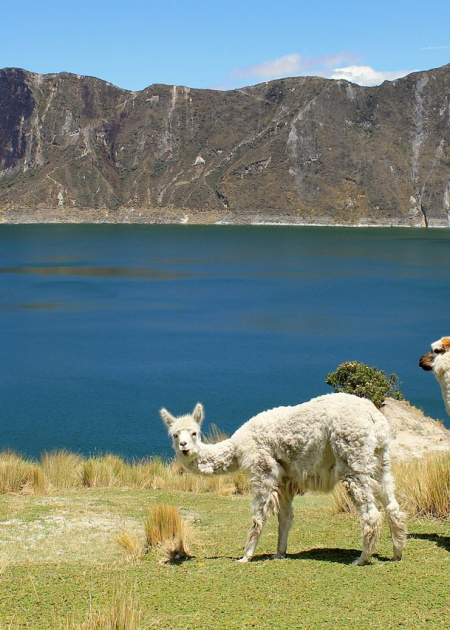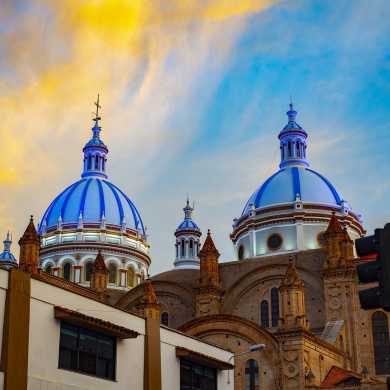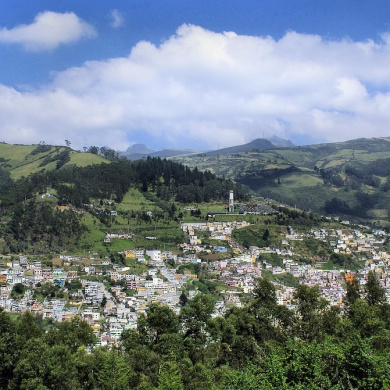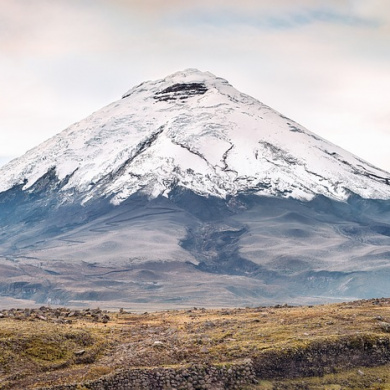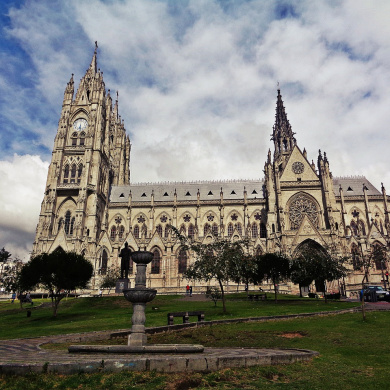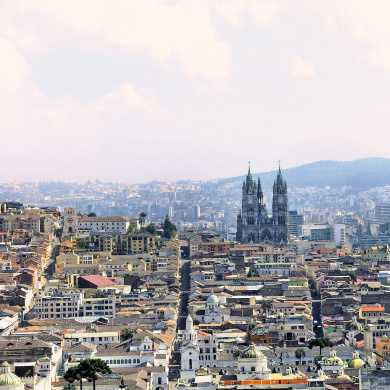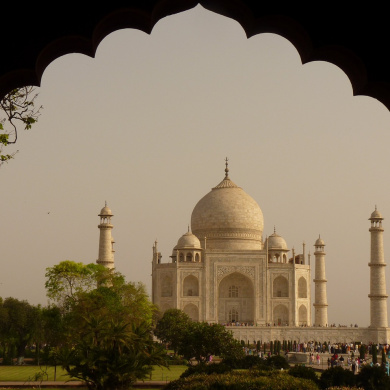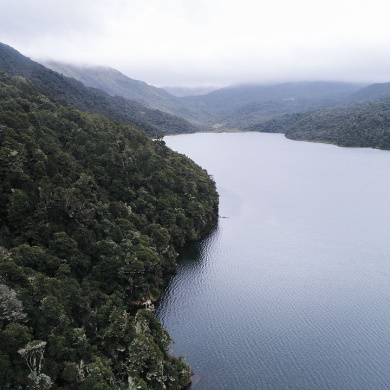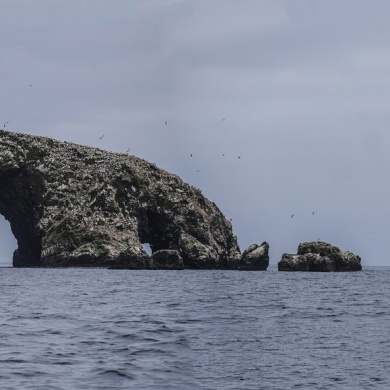Why travel to
Ecuador is a beautiful and diverse country full of amazing outdoor activities and natural wonders. It has some of the most spectacular scenery in the world, from the snow-capped volcanoes of the Andes mountains, to the lush rainforests of the Amazon, to the unique landscape of the Galapagos Islands. There are plenty of opportunities for adventure, whether you choose to hike, raft, wildlife watch, sunbathe, snorkel, surf or even just explore. The wonderful culture, exquisite cuisine, and friendly locals make it a great country to visit.
Cost of living
The cost of living in Ecuador varies depending on factors such as geographic location, lifestyle, and type of residence. Generally speaking, living expenses in Ecuador are lower than many Western countries and expats may be able to purchase a better standard of living for a lower budget than in the US. Basic necessities such as groceries, utilities, and transportation can be significantly cheaper than in the US. Living in the cities and on the coast is expected to cost more than living in the rural interior.
Safety
Yes, it is safe to travel to Ecuador. The U.S. Department of State's Bureau of Consular Affairs rates Ecuador as a Level 1, meaning exercise normal precautions. Nevertheless, like any country, it is important for travelers to be aware of their surroundings and take safety precautions.
Places to visit
- Galapagos Islands - The Galapagos Islands are a UNESCO World Heritage Site located in the Pacific Ocean off the coast of Ecuador, as home to some of the world’s most fascinating species and incredible landscapes. Travellers are able to see the amazing wildlife, swim with sea turtles, and dive among the colourful fish.
- Cotopaxi National Park - Located just a few hours outside of Quito, Cotopaxi National Park is home to one of the world’s tallest active volcanoes, Cotopaxi. The majestic park also boasts views of the Andes Mountains and lagoons which attract abundant bird life.
- Quito - Quito, the capital of Ecuador, is known for its colonial architecture and its mountain location in the Andes. Visitors to Quito are mesmerized by its cobblestone streets and spectacular views of El Panecillo, a hill featuring a large statue of the Virgin Mary.
- Mindo - A small but popular eco-tourism area, Mindo is located in the Chocó region of northwestern Ecuador, just two hours north of Quito. With numerous waterfalls and cloud forests surrounding the area, this quaint village is ideal for bird watching and exploring nearby caves.
- Banos - A small mountain town, Baños is known for its hot springs, dramatic scenery and adventure sports. Popular activities in the area include mountain biking, rafting, and hiking along the stunning local trails surrounded by the jungle.
- Cuenca - Cuenca is a picturesque colonial city in the south of Ecuador that is known for its cobblestone streets, colonial structures and colorful markets. This friendly city offers plenty of attractions, from traditional markets and interesting museums, to local restaurants and vibrant nightlife.
- Cuyabeno Wildlife Reserve - Peru’s largest protected nature reserve, Cuyabeno is located in the middle of the Amazon forest. This lush tropical reserve is home to an incredible variety of wildlife, and offers visitors the chance to spot a wide range of birds, mammals, insecs, and reptiles.
Food to try
- Ceviche - This popular seafood dish typically consists of shrimp, onions, cilantro, tomatoes, garlic, and lime juice, served with popcorn to complete the meal.
- Locro De Papa - A traditional potato soup made from yellow potatoes, spices, and cheese.
- Fanesca - A thick stew or soup made with a variety of grains, pulses and other ingredients, including fish.
- Chupe de Camarones - A creamy shrimp stew with onions, tomatoes, garlic, cumin, and cilantro.
- Pambazo - A roll of bread soaked in a chile sauce, then filled with potatoes, cheese, and other ingredients, before being deep-fried.
- Hornado - A slow-roasted pork dish popular in the highlands of Ecuador.
- Sancocho - A hearty soup made with pork, beef, chicken, fish, veggies, and spices.
- Guatita - A stew made with beef or pork trotters, onions, and potatoes.
- Seco de Chivo - Tender, slow-cooked goat in a spicy tomato-based stew.
- Empanadas - Hand-held pastries filled with potatoes, vegetables, meats, cheeses and spices.
Souvenirs
- Panama Hat – Known as one of the most famous items found in Ecuador, these handwoven hats are known as the "official hat of Ecuador" and are perfect to keep your head protected from the sun!
- Alpaca Sweaters – These handmade sweaters are made out of alpaca wool, which is said to keep its wearer safe from the sun and keep one warm even in the coldest of climates.
- Hand-painted Ceramics – The artisans of Ecuador produce many colourful and unique hand-painted pieces of ceramics, which make for great souvenirs to bring home.
- Woodcarvings – Ecuador is home to a large number of talented woodcarvers who produce beautiful sculptures to adorn the walls of homes.
- Embroidered Textiles – The colourful and intricately embroidered textiles found in Ecuador are a perfect memento for your trip!
- Leather Goods – Ecuador has a wealth of high-quality leather goods, including bags, wallets, and belts, which make a great addition to any wardrobe.
- Books – There is a large selection of books in Ecuador, including famous works of literature, history books, and informative guide books.
- Chocolates – Chocoholics won't want to miss out on the delicious Ecuadorian chocolates, which come in a variety of flavours.
- Fruit Snacks – Want to take a unique treat home? Dried fruits and nut snacks are a great way to preserve the flavours of Ecuador in a portable and tasty form.
- Coffee – Ecuador's coffee beans produce some of the world's best brews, and luckily for travellers, these delicious beans come in all sorts of packaging for easy transport!
